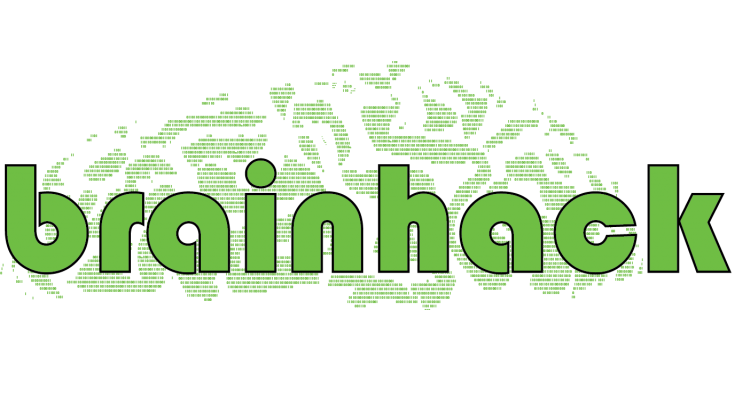Projects
Click the buttons below to filter the projects you may want to join.

16s Metagenomic analysis of Gut Microbiome
16S rRNA gene sequencing is commonly used for identification, classification and quantitation of microbes within complex …

Automatic detection of spiking motifs in neurobiological data
The study of spatio-temporal correlated activity patterns is very active in several fields related to neuroscience, like machine …

Automatise your processing pipelines with nipype / pydra
Neuroimaging and electrophysiology processing requires many steps, calling different softwares, possibly in different languages …

Bayes on the Brain in Python
Human brain imaging data is massively multidimensional, yet current approaches to modeling functional brain responses apply …

BIDS, electrophysiological data, open dat
We are currently developing a standard for organizing electrophysiological data recorded in animal models. It consists in …

Big Neuroimaging Dataset Phenotype BIDS Tools
Information about phenotypes (i.e., age, responses to cognitive/clinical questionnaires, blood tests) is hard to share and varies …

Brainharmonic - Generating music from brain signal data using deep learning
This project aims to develop a tool to generate music from brain signals using deep learning models. There has been a lot of work …

Cerebro: One tool to view them all
What are you doing, for whom, and why? Cerebro aims to provide a visualization solution to advance the currently available …

Decoding Fiber photometry & Rat behavior
What are you doing, for whom, and why? I am collecting calcium signals from Infalimbic, Prelimbic, and Anterior cingulate …

dMRI QC: implementation and automation
- What are you doing, for whom, and why? I am a USYD NIF fellow from school of biomedical engineering. I work under Prof Fernando …

DSST defacing pipeline
- What are you doing, for whom, and why?
- What makes your project special and exciting?
- How to get started?
- Where to find key …

Flexibly convert fmriprep confounds to censor files
Fmriprep gives a smorgasbord of confounds to be used in later processing. While the program provides the option for generating …

GUI frontend for creating MEG bids
- Build a gui front end for creating MEG bids. Currently this is a cmdline driven process, which isn’t always an accessible …

Guidelines for tractography in primates
Create guidelines i.e. summarize all the important things to know, step by step, to make a good tractogram edition for non-human …

Inferring task-related higher-order interactions from brain network signals
A central hypothesis in neuroscience posits that cognitive functions emerge from complex interactions between multiple brain …

Introduction to MATLAB Bootcamp
This project is aimed at those at the beginner to intermediate level of programming / coding and MATLAB, and/or those interested …

Large Scale FPGA Neuromorphic Interface precursor work. A GPU implementation of Allen Brain V1 measured model using Julia and or PyGeNN
- Providing a ground truth for an FPGA based large scale simulation.
- Making Julia+GPU potentially a more Democratic programming …

LFP and single units decoding in rats performing a distance estimation task
Navigating in space requires to continuously updating the representation of its own position in the environment. In poorly cued …

NeuroDesk -A flexible, scalable, and browser-based data analysis environment for reproducible neuroimaging
What are you doing, for whom, and why? Neurodesk provides a containerised data analysis environment to facilitate reproducible …

Normalisation and artefact correction toolkit for fibre photometry data
Studies using optic fibres to record real-time fluorescent biosensors in-vivo are now commonplace, yet despite a large degree of …

OpenXstim
Transcutaneous electrical spinal cord stimulation, a non-invasive, reversible spinal cord neuromodulation method holds tremendous …

PhysioPy - peak detection toolbox for physiological signals
peakdet aims to provide a set of tools that will work with a variety of input data to reproducibly generate analysis-ready …

Physiopy-documentation
Physiopy is a community formed around developing tools to operate physiological files in neuroimaging setups. This project …

PsychophyGit - a fast and flexible tool for online experiments
Acquiring human behavioural data through the Internet is on the rise, especially since the COVID-19 events. Often most, …

Removing pink noise (1/f) in LFP across different electrophysiological recording systems
- What are you doing, for whom, and why?
- What makes your project special and exciting?
- How to get started?
- Where to find key …

SLAM - A pure python package for Surface anaLysis And Modeling
Slam (https://brain-slam.github.io/slam/) is an open source python package dedicated to the representation of neuroanatomical …

Strategies for modelling sub-cortical processes with RNNs
This project is currently at the thought-bubble stage, but I am interested in different ways recurrent neural networks (RNNs) can …

Sulcilab: A collaborative sulci labelling web app
Sulcilab is a web base application to mannually labelize sulcal graphs (outputs of BrainVISA). I propose this project with 2 …

Viewing the world in third-person - experimental considerations for a successful study
What are you doing, for whom, and why?
I am conceiving an experiment to study the implications of living with a third-person …